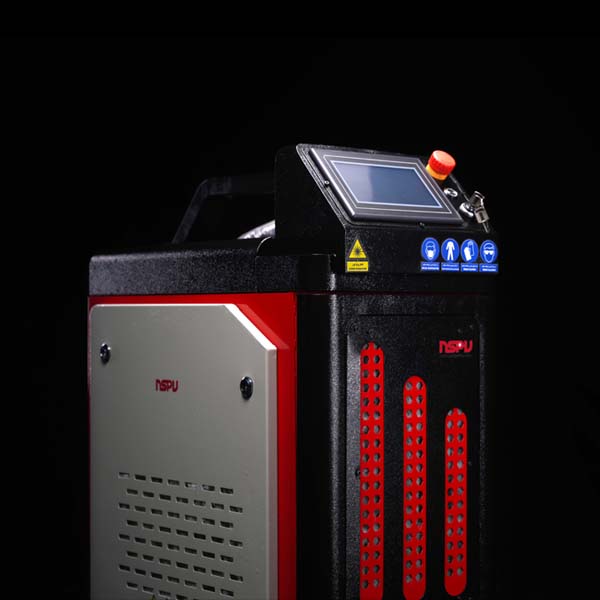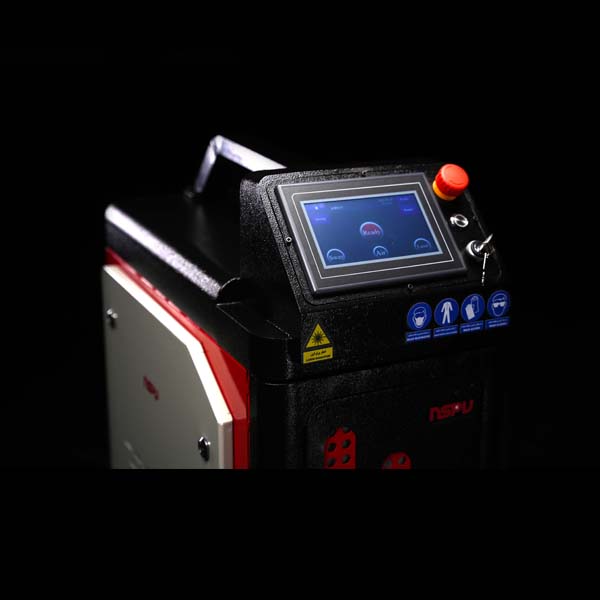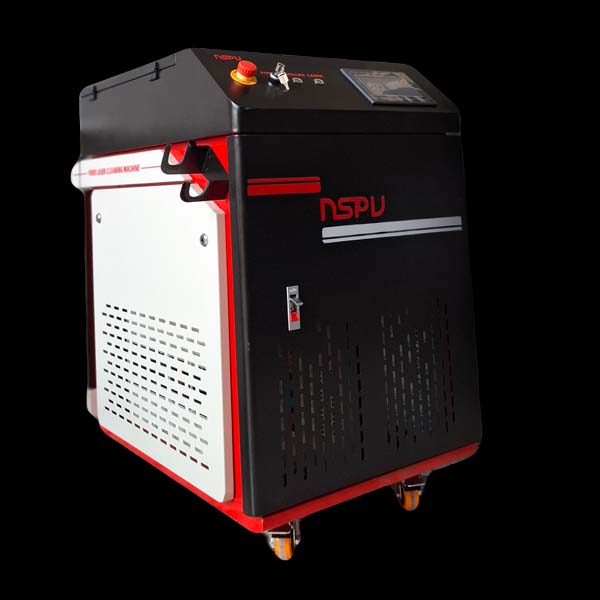The principle of the pulse laser cleaning device is to use high-frequency laser pulses to irradiate the surface of the part. The coating layer instantly absorbs the concentrated laser energy, forming plasma (a highly ionized unstable gas), which generates shock waves that impact the contaminants, breaking them into small pieces, resulting in immediate evaporation or peeling. In such a way, oils, rust, surface adhesives, or coatings absorb energy on the surface and expand rapidly
Nanosecond laser pulses acting on the surface of contaminants can reduce excessive substrate temperature due to heat accumulation and conduction, so that contaminants quickly reach the threshold of separation and removal. Consequently, they improve the cleaning capability and efficiency. If the substrate is very sensitive, this type of laser is more suitable for protecting it from damage and reducing the complexity of controlling the cleaning process parameters
Technical Specifications of 500W Laser Cleaner
| Voltage | Single-phase 220V±10%, 50/60Hz AC |
| Power Consumption | 4000W |
| Average Laser Power | 500W |
| Power Adjustability | 10-100 (gradient adjustable) |
| Pulse Frequency | 20-50 (gradient adjustable) |
| Laser Wavelength | 1064 |
| Single Pulse Energy | 1.5mj |
| Laser Output Type | Pulsed |
| Cooling System | Water-cooled Chiller |
| Device Dimensions | 1130mm×830mm×1300mm |
|
Device Weight
|
170Kg |
Technical Specifications of 300W Laser Cleaner
| Average Laser Power | 300W |
| Power Adjustability | 10-100 (gradient adjustable) |
| Pulse Frequency | 20-50 (gradient adjustable) |
| Laser Wavelength | 1064 |
| Single Pulse Energy | 1.5/15/50mj |
| Laser Output Type | Pulsed |
| Cooling System | Water-cooled Chiller |
| Device Dimensions | 832mm×572mm×1032mm |
|
Device Weight
|
170Kg |
|
Fiber Length
|
5m |
Laser Cleaner Head
In the cleaning process with the laser cleaning device, a slower galvanometer scan speed is used, allowing the laser pulse energy to accumulate more and effectively remove the contaminated layer. However, this may cause secondary oxidation. Reducing the scan speed may result in the inability of the device to remove stubborn contaminants effectively






